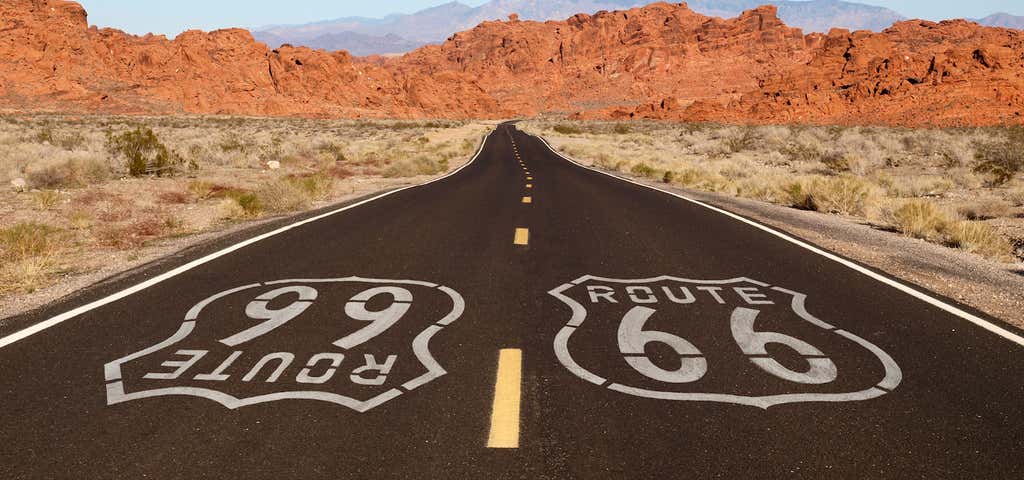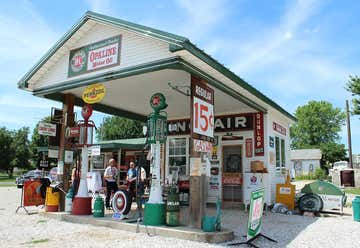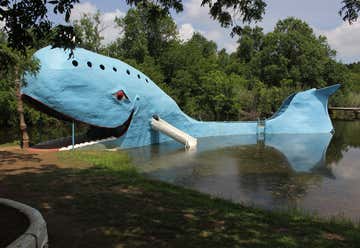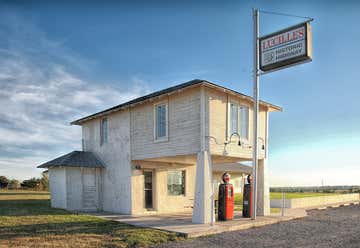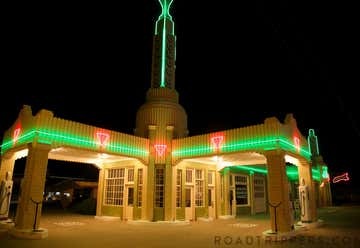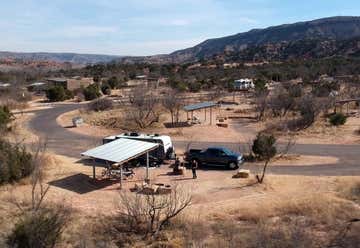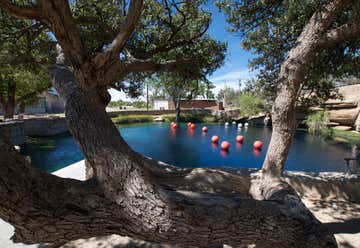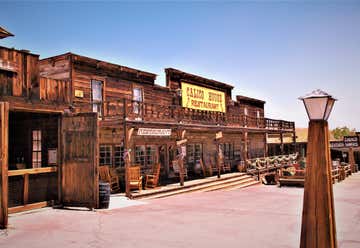Route 66, and its 2,500 miles, is known affectionately as "The Mother Road." It's the quintessential cross-country road trip experience. From Chicago through the beating heart of America, the route officially ends at the Santa Monica Pier. The road reached peak popularity in the late 1940s and early '50s before being officially removed from the U.S. Highway System in 1985. After a few years, travelers from around the country and beyond started feeling tinges of nostalgia, and by the end of the 1980s it was once again becoming one of the most popular road trip routes.
Looking for more tips for your Route 66 trip? We've got you covered.
Ted Drewes Frozen Custard, a Route 66 icon, has been serving hot and hungry road travelers for more than 80 years. After opening his first successful custard store in Florida in 1929, Drewes opened a few more stores, including this stand located on Historic Route 66. Almost a century later, the stand is still a family-run business.
The Jesse James Wax Museum in Stanton is an interactive walking museum that takes visitors through the life and mysterious death of the notorious outlaw. The gift shop is loaded with kitschy James memorabilia. The nearby Riverside Wildlife Center, full of snakes and alligators, is also worth a visit.
If you need a break from driving, pull over at the Fantastic Caverns in Springfield and explore an underground world. North America's only completely ride-through cave tour is absolutely worth the 55-minute tram ride.
Your last Missouri stop should be at Gary's Gay Parita in Ash Grove, a verifiable Route 66 icon. As Gary says, “Folks from all over the world say it’s the dream of their life to travel Historic Route 66. It’s the dream of my life to meet those folks.” Owner Gary Turner loves the Mother Road and the people on it so much that he recreated a little retro Sinclair gas station and spends his days welcoming travelers with a soda and great conversation.
Your first stop in Galena should be Cars on the Route, a restored Kan-O-Tex service station formerly known as 4 Women on the Route. Along with snacks and sandwiches, here you can shop for antiques and Route 66 memorabilia made by local artists. Outside is a lineup of old trucks on display, including one that inspired the Tow Mater character in Disney’s Cars.
The Blue Whale of Catoosa was built by Hugh Davis in the early 1970s as a surprise anniversary gift for his wife Zelta, who loved whales and collected whale figurines. Take time to wander around the remnants of this famed roadside wonder, and have a snack at one of the picnic tables.
Chandler’s Lincoln Motel was built in 1939 and has one of those motor courts you see in old movies. The cottage-style rooms are clean and comfortable. Even if you don’t spend the night, it’s worth pulling over to take a photo of the 1950s neon sign.
After all that driving, you're probably thirsty. If carbonated refreshment is your jam, prepare to worship at the altar of the Pops Soda Ranch. Located just off Route 66 in Arcadia, POPS offers more than 700 sodas, sparkling waters, and shakes. Some of the more bizarre soda flavors include mustard, buffalo wing, ranch dressing, and sweet corn. There's a 66-foot-tall soda bottle out front, which lights up at night for a great photo op. This diner, gas station, and gift shop offers visitors several ways to “fill up.”
Lucille's Service Station—also known as Provine Station—is a classic Route 66 gas station known for its unusual design. Built by Carl Ditmore in 1929, there are only a few of these upper-story, porch-style stations left in the U.S. Ditmore sold his station to the Hamons family, and Lucille Hamons ran it for 60 years, earning it its current name.
You may recognize Tower Station from the movie Cars. One of many locations in the animated movie based on real-life Route 66 icons, Ramone’s House of Body Art (an auto body shop) is heavily inspired by the U-Drop Inn. Built in 1936, the U-Drop Inn was inspired by a drawing John Nunn made in the dirt with a nail. The gas station and cafe would become an enduring example of fine Route 66 architecture for roughly 60 years before closing in the 1990s. The First National Bank of Shamrock purchased the building in 1999 and donated it to the City of Shamrock, which restored it with help from a $1.7 million federal grant. Today you can “drop inn” to the gift shop and small museum.
Get your nature kicks on Route 66 at Palo Duro Canyon State Park. This is the second largest canyon in the U.S. and admission is only $8. You can easily drive the length of the park and pull over for the scenic overlooks. There's a sizable campground in the park (perfect for stargazing), and several trails that traverse the bottom of the canyon offer a beautiful place to stretch your legs.
Everything is bigger in Texas, so you may as well try your luck with the 72-ounce steak challenge at the Big Texan Steak Ranch in Amarillo. Just a few years after owner Bob Lee opened his steakhouse, he noticed an influx of hungry cowboys on payday looking to down some hearty steaks. One Friday in 1962, Lee set up an eating contest to see who could eat the most one-pound steaks in an hour. After one cowboy downed 72 ounces of steak (along with a salad, a shrimp cocktail, a roll, and a baked potato), Lee declared that anyone who could eat that much steak in an hour should get it for free. The current record-holder is Molly Schuyler, who devoured three steaks (plus sides) in just 20 minutes in 2015. The restaurant also features a shooting gallery, arcade games, a huge gift shop, and a bull statue out front.
Once you reach Adrian, pat yourself on the back: You've made it to the midpoint of Route 66. You'll know you've arrived once you see the MidPoint Cafe, a vintage-style roadside diner with lots of photo ops to commemorate your journey down (half of) the Mother Road. The restaurant and gift shop claims to be located at the geographic midpoint between Los Angeles and Chicago.
Santa Rosa is probably best known for being home to the 80-foot-deep Blue Hole, a lush oasis in the middle of the desert. With crystal clear water that remains at a perfect 62 degrees Fahrenheit all year round, it’s a popular place to dive, or for Route 66 travelers to cool off with a dip.
For an authentic Route 66 meal, make a pit stop at the 66 Diner in Albuquerque, where you can load up on burgers, fries, strawberry shakes, and the biggest banana split you've ever seen. The 66 Diner doesn't just serve authentic 1950s-style food, but goes out of its way to look the part. Retro touches include chrome tables, a jukebox loaded with period-appropriate 45 records, and wait-staff in 1950s outfits. The sundaes here are comically giant—the banana split has eight scoops of ice cream, so get it to share.
This classic Route 66 restaurant is best-known for its homemade red and green chile sauces. Even if you’re not hungry, it’s worth stopping for a photo in front of the building, which features a hand-painted map of Route 66.
The resurgence of Winslow didn’t start entirely on the corner. During the town’s heyday as a stop for steam locomotives, Fred Harvey wanted to build a landmark hotel in Winslow. With a price tag that would equal nearly $40 million today, La Posada Hotel was completed just after the stock market crash. It would only be open for 27 years, eventually having most of its fine furnishings sold at auction, but efforts to save the Winslow icon were eventually successful.
Facing the threat of demolition for several decades, the La Posada Foundation and the new owners of the property finally restored La Posada Hotel to its former glory as the Jewel of the West. The foundation changed their name to the Standin’ On the Corner Foundation and took on their next project, helping to make the now-famous park a reality.
When Juan and Mary Delgadillo opened the Snow Cap Drive-In on Route 66 in Seligman in 1953, they probably didn’t anticipate it becoming a worldwide tourist attraction. More than 60 years later, Delgadillo's Snow Cap Drive-In is one of the most sought-out Route 66 destinations. Built with scrap lumber from the Santa Fe railroad yard, the Delgadillo family constructed the drive-in on an absolute shoe-string budget.
To attract travelers, Delgadillo took a 1936 Chevy, cut the top off, and decorated it with every weird paint color and doodad he could find, including a Christmas tree in the back. The plan worked and it’s still one of the most photographed pieces of Route 66 Americana.
The drive-in isn’t the only iconic Route 66 location in the Delgadillo family. Juan’s brother, Angel, made his mark on the Mother Road with his barber shop (now a gift store). Angel, affectionately known as the “guardian angel” of Route 66, founded the Historic Route 66 Association of Arizona in 1987, a move that would quickly be imitated in other states along the route.
Roy's is located along a desolate stretch of the Mother Road in the tiny desert town of Amboy. The motel, cafe, and gas station has appeared in numerous movies and is one of the best photo ops along the entire route. The iconic neon sign has recently been restored so it looks great day or night.
If Oatman and its wild burros were a bit too rowdy for your taste, Calico Ghost Town might be a better bet. It's a bit touristy and maintained by the regional park system, but it has a nice campground and several old buildings to explore, including museums, shops, and restaurants.
